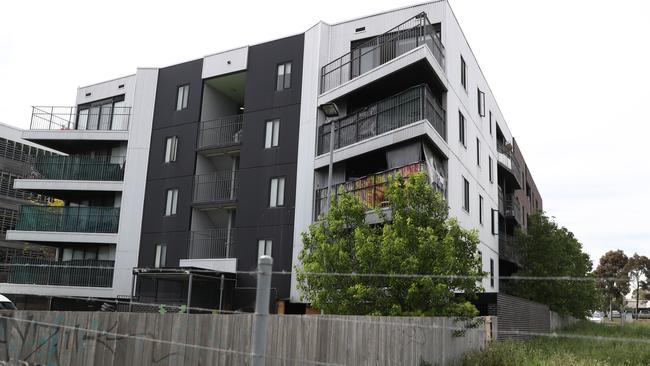The Department of Health and Human Services must be perfect in its response to virus outbreak
When the stakes are so high, DHHS owes us all a responsibility to ensure there are no cracks in the way it now manages virus outbreaks because the tiniest mistake could be catastrophic.
Coronavirus
Don't miss out on the headlines from Coronavirus. Followed categories will be added to My News.
After yet another mishap, Victoria’s health officials face one of their biggest tests of the coronavirus pandemic to halt an outbreak spreading through Melbourne’s north.
If they pass, the state can consider its second wave all but over. If they fail, Melburnians’ confidence of achieving a “COVID-normal” will burst.
Under its new “three ring” approach, the Department of Health and Human Services is racing to place into isolation more than 500 cases, close contacts and even the contacts of close contacts across the northern suburbs.
The more distant contacts may be free in a day or two, provided coronavirus tests prove they or their connections are virus free; hundreds of others will endure isolation for a fortnight.
While the latest northern suburbs cluster may not yet be the biggest threat Melbourne has dealt with, it serves as a perfect exam for DHHS to prove it has learned the lessons from its past failings.
During a pandemic, even the tiniest mistake, misconduct or simple mix-up can have the most catastrophic of consequences.

It should never be forgotten the coronavirus crisis holding the world hostage started as a single case.
Therefore, the dam wall needed to protect us from the surging wave of COVID-19 doesn’t need to be good, it has to be perfect.
A single drop of virus allowed through the thinnest crack can be enough to contaminate thousands of people.
DHHS is supposed to be Victoria’s dam wall — but it has been far from perfect.
Its walls were weakened long before the pandemic hit Victoria when the state’s contact tracing team was depleted to fewer than 20 members, who were completely out of their depth when hundreds of cases poured in courtesy of the hotel quarantine debacle.
As they tried to play catch-up, thousands of support staff were finally brought in to contact trace. But no sooner had that leak been plugged than DHHS ran into issues with its outdated paper records system.
Delays in processing information meant some cases were not contacted for up to five days, making it impossible to get ahead of new clusters.


Fact-finding missions to NSW in September and the introduction of a new computer system finally addressed those issues, only for another to spring up in Frankston-Chadstone-Kilmore-Shepparton.
As that outbreak spread hundreds of kilometres, DHHS moved to adopt a “third ring” approach — just as other states had already been doing successfully for months.
Its latest crack appears to be a mix-up between the words “isolation” and “quarantine”, and the way those subtly different measures were communicated to a family.
The DHHS is yet again overhauling it processes — this time to assign a single case manager for each family, rather than different officers for individuals under the same roof. The move should cut the chances of mixed messages, which appear responsible for a child who was supposed to be in isolation returning to school when other family members ended their quarantine.
In this case it is not clear if the lion’s share of the blame for the mix-up lies with the family who misinterpreted the message, or DHHS staff who struggled to communicate it.
But it doesn’t matter. When the stakes are so high, DHHS owes us all a responsibility to ensure there is no chance of its orders being misinterpreted, no matter how many times that means repeating them.
The first stage of contact tracing is to look back and determine how one person became infected. The second stage is to then work out where the virus will head next, so they can set up a wall and ensure nothing leaks further.
As COVID-19 has gone on, DHHS has become very good at finding the source of the leaks in its own dam wall.
Now it now needs to improve its forward focus and find where the next crack is likely to emerge so it can act pre-emptively like other states.
As the state reopens, Victorians would have a lot more confidence of avoiding a third wave if they thought the department was ahead of time, not just filling past cracks.
MORE NEWS:
HOW ‘RING OF STEEL’ IS DIVIDING TOWN OF LITTLE RIVER
